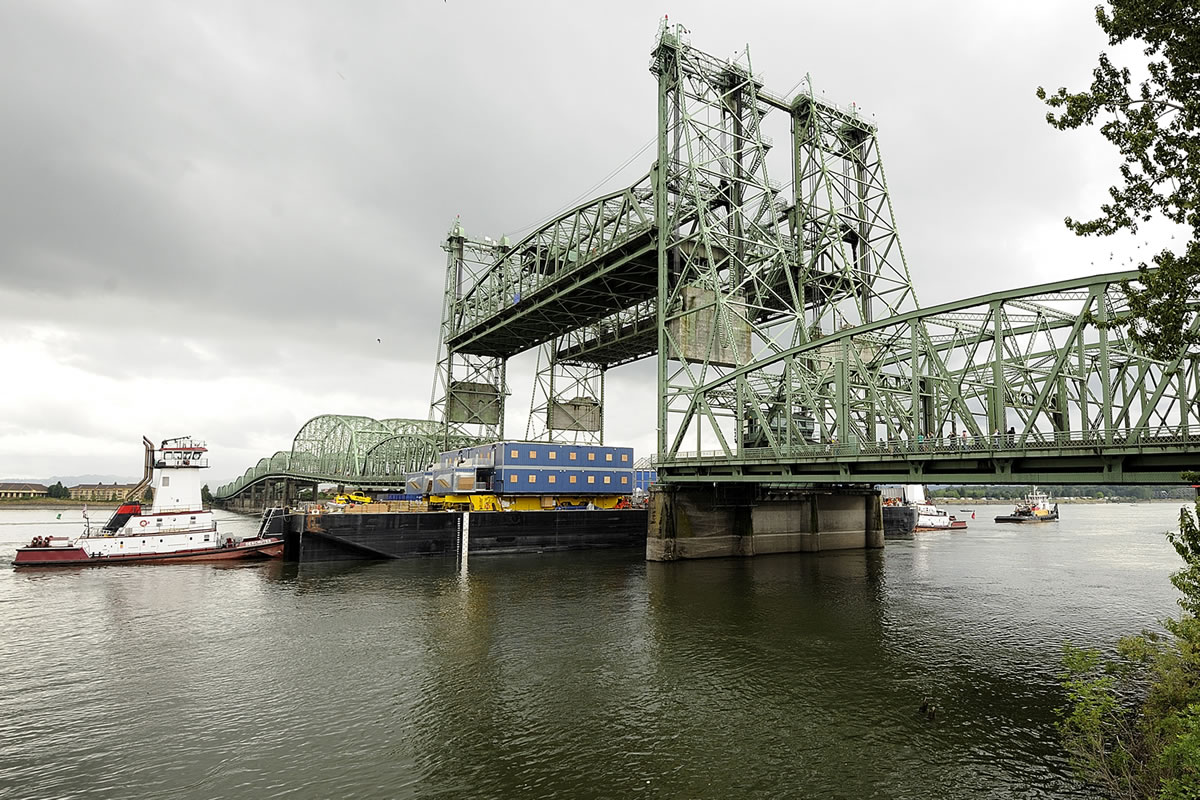The Columbia River Crossing offered a clearer picture Tuesday of what a bridge with up to 110 feet of clearance would be.
Raising the Interstate 5 Bridge component of the $3.5 billion project by 15 feet would significantly steepen approaches on both ends, according to an ongoing CRC analysis. It would begin to encroach on federal airspace. It would add $36 million — about 1 percent — to the price tag.
But such a move would not add to the project’s currently planned footprint in downtown Vancouver, said CRC task leader Jay Lyman. He and others called the added impacts “modest” compared to what some height — not yet known — above 110 feet would trigger.
The new details were presented in Vancouver before a Washington legislative oversight committee. Months after long-standing plans for a 95-foot-high bridge were rejected by the U.S. Coast Guard and others, the CRC continues to search for a new way forward.
CRC leaders have said impacts would be much more severe — and much more costly — at some point beyond 110 feet. Project officials plan to conduct similar analysis for a bridge height of 115, 120 and 125 feet in the next few weeks to determine what’s feasible, Lyman said.
They’ll have to settle on a number before filing a bridge permit application with the U.S. Coast Guard — which the CRC plans to do late this year or early next year. The Coast Guard, which holds bridge permit authority, must sign on in order for the project to move forward. And the agency must be convinced that the CRC has done its best to avoid impacts to river users — something current plans don’t do, according to the Coast Guard.
Even at 110 feet, not everyone would be in the clear. As many as 20 existing river vessels would still be unable to pass under that height, according to the CRC. That number goes up — though extra costs go down — at 105 and 100 feet, according to the analysis.
The U.S. Army Corps of Engineers has said it needs 116 feet of head room for its dredging vessels. Vancouver-based Thompson Metal Fab, among several manufacturing operations on the Columbia River, has asked for at least 125 feet of clearance to meet its current needs.
The current I-5 Bridge offers 179 feet of clearance at its maximum lift height.
Its replacement would also extend light rail into downtown Vancouver and rebuild the freeway on both sides of the Columbia River.
Official: Light rail a must
Rep. Mike Armstrong, R-Wenatchee, the committee chairman, pressed project leaders on a question that likely delighted many CRC opponents in the room: What if light rail wasn’t part of the plan? How much extra clearance could that free up?
State Transportation Secretary Paula Hammond made it clear that’s not a path the CRC is planning to pursue this late in the game.
“If you don’t have light rail on the bridge,” she said, “you don’t have a project.”
All of the milestones the CRC has passed so far — environmental work, funding assumptions, the federal record of decision — center on the light rail alternative local leaders approved in 2008. Changing course now would essentially mean starting from scratch, Hammond said.
Even if removing light rail were an option, designers can’t simply lop off the bottom half of the planned deck truss bridge design and still expect it to function, said CRC project director Nancy Boyd. Taking out the high-capacity transit element may add only five feet of clearance, she said.
Committee member state Sen. Curtis King, R-Yakima, asked if another bridge design might allow for cheaper cost without light rail. Again, Hammond jumped in.
“This took us 10 years to get this far,” Hammond said, reiterating that such a move would mean “going back to the drawing board.”
King replied: “I’d rather get it right.”
For the first time in its three meetings this year, the oversight committee allowed public comment Tuesday. A variety of voices made their case on both sides of the debate. Many urged leaders to make the CRC happen, mostly citing its economic benefits and importance to the region. Critics raised financial concerns and other worries in their opposition.
CRC plans call for tolling, federal funds and the two states to cover the $3.5 billion cost. But none of that money is secured yet, despite project leaders’ hopes to begin major construction in late 2014.
The CRC hired a firm this month to begin the investment-grade analysis that will go a long way toward determining toll rates and revenue assumptions. A preliminary report is due in January.
Eric Florip: 360-735-4541; http://twitter.com/col_enviro; eric.florip@columbian.com.




